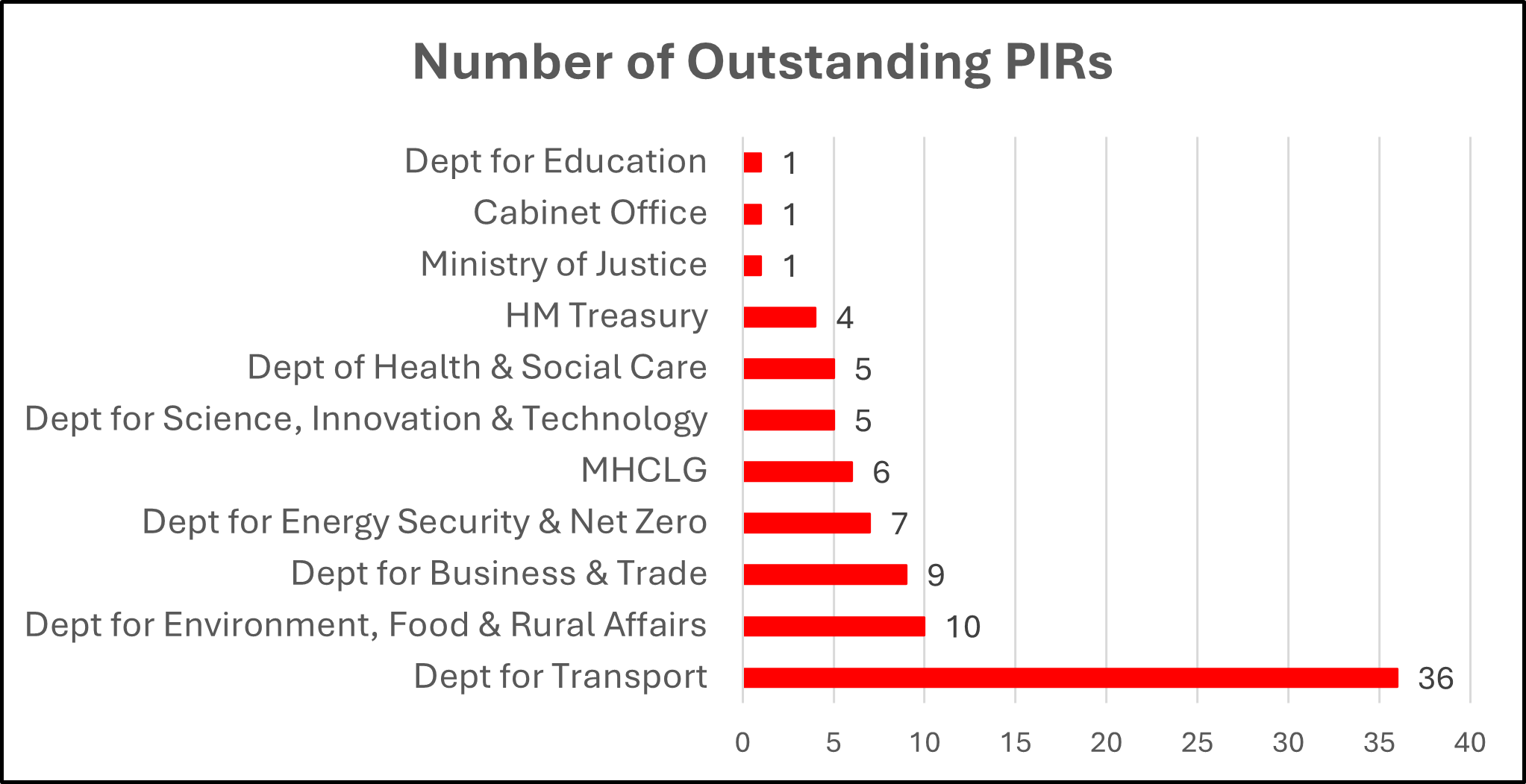Evaluating existing regulations is a key element of the Government’s plan to unlock the growth potential of the British economy. Post Implementation Reviews (PIRs) check whether regulations are achieving their objectives or if they are imposing excessive costs. In doing so, they support the Government’s growth agenda and its pledge to reduce the administrative costs of regulations by 25%.
The RPC has been concerned over many years at departments’ failure to complete PIRs. We are concerned because it means that departments do not have the evidence to correct past mistakes or suggest how to improve future regulatory decisions; it is also generally a statutory requirement.
One of our earliest Blogs in 2021 reported that only 40% of PIRs were being completed on time. Since then, we have repeatedly raised this issue, most recently in February this year, where my Blog commended Defra for reducing their backlog of 56 PIRs, but noted that many other departments were still not meeting their statutory requirements to complete PIRs on time (or at all).
League Table of Departmental Performance
The government has asked the RPC to publish data on departments’ performance on PIRs in order to strengthen accountability and create stronger incentives for compliance. Today we are releasing that information for the first time in the form of a league table of outstanding PIRs.
It shows that there are 85 outstanding PIRs (of which over 40% relate to Department for Transport measures) – for comparison, last year the RPC reviewed 70 IAs, so this is a backlog roughly equivalent to a year’s regulatory activity. A spreadsheet with all the outstanding PIRs split by department is on our website here.

Departmental commitments to address their PIR backlogs
I wrote to the permanent secretaries of the eight departments with four or more outstanding PIRs, asking them to commit to catch up on their backlog of PIRs.
The responses from departments have offered commitments to clear their backlog and I commend them for having responded so positively:
- The Department for Transport (DfT) has set a deadline to clear its outstanding PIRs by the end of June 2025, but has noted that some may take slightly longer.
- The Department for Business and Trade (DBT) has committed to complete all outstanding PIRs by summer recess (22 July 2025).
- The Department of Health and Social Care (DHSC) plans to progress and publish their outstanding PIRs as soon as possible. They have made specific commitments regarding each outstanding PIR and set out how they will improve their processes in future.
- The Department for Energy Security & Net Zero (DESNZ) plans to complete 3 of their outstanding PIRs by Summer this year and one by Autumn this year. Two other measures are out to public consultation and one relates to fracking which is subject to a moratorium.
- The Department for Science, Innovation and Technology (DSIT) has committed to deliver the outstanding PIRs this fiscal year (i.e. by 5 April 2026).
- The Department for Environment, Food & Rural Affairs (Defra) made a commitment in March 2023 to address their then backlog of 56 PIRs by the end of 2024. They have since made progress in reducing their backlog and their permanent secretary wrote to the EFRA Select Committee in September 2024 stating their commitment to ensuring that the backlog is cleared “at the earliest opportunity”.
- HM Treasury (HMT) has committed to publishing its outstanding PIRs “in due course”.
- The Ministry for Housing Communities and Local Government (MHCLG) have given a commitment to continue to reduce the PIR backlog, but have not suggested a timescale in which they might achieve this.
Next Steps
The RPC will monitor Departments’ performance against their commitments, as well as their performance in completing PIRs on time (and to a high standard) in future. We will provide regular updates going forward in our Blogs and other publications.
Leave a comment